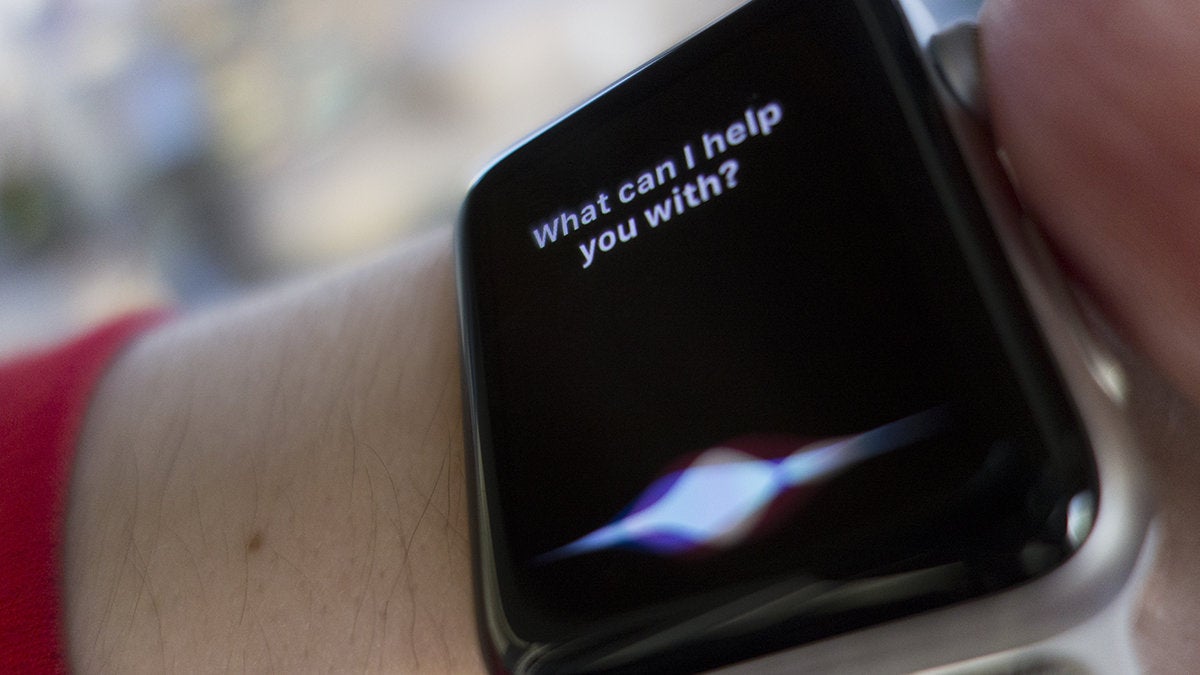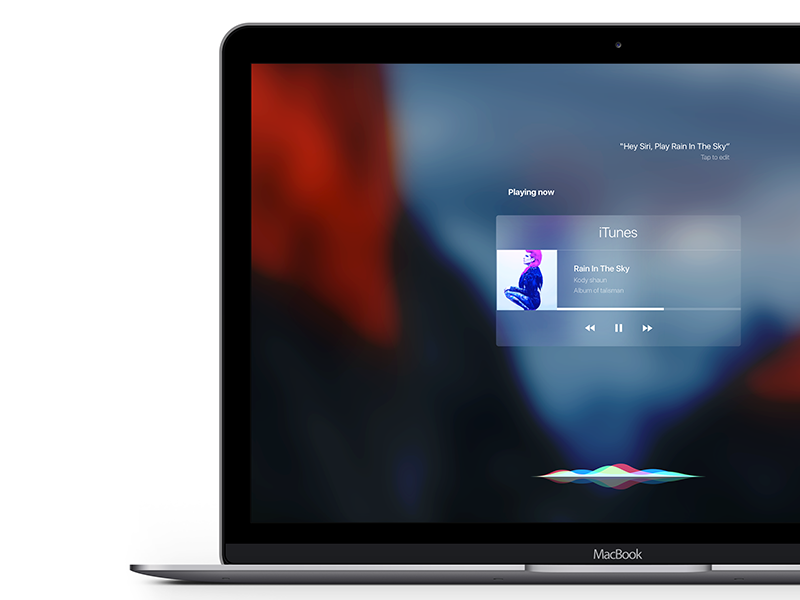A collection of tutorials from the 9to5Mac team helping you fix and get the most out of your Mac and iOS devices. Siri It works on iOS, macOS, tvOS, HomePod, CarPlay, and Apple Watch. To ask Siri on your Mac, do any of the following: Click the Siri icon in the menu bar (or use the Touch Bar). If your Mac supports it, say “Hey Siri.” Your portable computer must be open to use Hey Siri. If Siri doesn’t respond, open Siri preferences and make sure Listen for “Hey Siri” is turned on. You can also use Hey Siri when your supported Mac is locked or in sleep.
How Siri Protects Your Privacy

How Your Data Makes Siri Better
Changes We’re Making
- First, by default, we will no longer retain audio recordings of Siri interactions. We will continue to use computer-generated transcripts to help Siri improve.
- Second, users will be able to opt in to help Siri improve by learning from the audio samples of their requests. We hope that many people will choose to help Siri get better, knowing that Apple respects their data and has strong privacy controls in place. Those who choose to participate will be able to opt out at any time.
- Third, when customers opt in, only Apple employees will be allowed to listen to audio samples of the Siri interactions. Our team will work to delete any recording which is determined to be an inadvertent trigger of Siri.
Press Contacts
Cat Franklin
Apple
(669) 276-1209
Apple Media Helpline
(408) 974-2042
HomePod is a breakthrough speaker that adapts to its location and delivers high-fidelity audio wherever it’s playing. Together with Apple Music and Siri, it creates an entirely new way for you to discover and interact with music at home. And it can help you and your whole family with everyday tasks — and control your smart home — all with just your voice.
Major sound,
minor scale.
This purposefully designed speaker creates rich, nuanced sound that defies its size. HomePod combines custom Apple-engineered audio technology and advanced software to deliver precision sound that fills the room. And at just under seven inches tall, HomePod fits anywhere in your home.
Deep bass with
range you can feel.
The Apple-designed high-excursion woofer is positioned at the top of the speaker facing upward, creating a wide range of deep bass that surpasses any traditional speaker. A six-microphone array, along with an internal bass-EQ microphone, analyzes and compensates for the effect of the room on the bass response, providing rich, consistent sound. And a powerful motor drives the diaphragm a remarkable 20 mm, so the bass shines through even when the volume is low.
Far and away
an incredible listener.
Six microphones positioned around HomePod allow it to pick up all the sound in a room. When you say “Hey Siri,” advanced signal processing, together with echo and noise cancellation, allows HomePod to hear you without the need to raise your voice — even if you’re across the room with loud music playing. After HomePod recognizes the words “Hey Siri,” what you say is encrypted and sent anonymously to Apple servers without being tied to your Apple ID.
High-fidelity audio
that’s all around you.
A custom-designed array of seven beamforming tweeters, each with its own amplifier, creates tremendous directional control. Placed around the base and using a folded-horn design, they send the flow of music toward the center and then out the bottom in a 360-degree pattern, resulting in an all-encompassing sense of space. This virtually eliminates early table reflections and allows for consistent high-definition sound.
The biggest brain
ever in a speaker.
An Apple-designed A8 chip orchestrates all the remarkable audio innovations inside HomePod. Like advanced signal processing so Siri can hear you over the music. Real-time studio-level processing that maximizes the bass while minimizing distortion. Buffering that’s even faster than real time. And upmixing of both direct and ambient audio. You get amazing sound, every single time.
Designed to be
seen and heard.
HomePod is wrapped in a seamless mesh fabric designed for aesthetics and acoustic performance. Available in white and space gray, it’s gorgeous from every angle — yet virtually transparent to the sound waves passing through it.
Knows how to
work a room. Automatically.
Setting up HomePod is quick and magical. Simply plug it in and your iOS or iPadOS device will detect it. Equipped with spatial awareness, HomePod automatically tunes itself to give you optimal sound — wherever it’s placed. Pair it with a second HomePod to create an unmatched stereo experience. And bring multiroom audio to your whole home with AirPlay 2.
Wall-to-wall.
Ceiling-to-floor.
It’s room-filling sound.
Place HomePod anywhere in the room. With spatial awareness, it automatically analyzes the acoustics and adjusts the sound based on its location. Direct sound, including the main vocals and instruments, is beamed to the middle of the room, while ambient sound is diffused into left and right channels and bounced off the wall. So the entire space is filled with rich, well-defined tones.
Control music throughout the home.
And experience a new dimension of stereo sound.
When you add HomePod to multiple rooms, the speakers communicate with each other through AirPlay. So you can ask Siri to play jazz in the living room and the Moana soundtrack in the kids’ room — or to play the same song everywhere in the house — all from where you’re standing. And for a wider, more immersive soundstage, put two HomePod speakers in a single room to create a stereo pair. Each HomePod automatically detects its placement and adjusts the music in balance with the other.
Keep listening.
Without missing a beat.
Whether you’re halfway through a phone call or listening to a song or podcast on your iPhone, you can easily hand it off to HomePod. Just hold your iOS device next to HomePod and whatever you’re listening to will continue to play seamlessly on HomePod.
The ultimate music authority.
HomePod is built to bring out the best in Apple Music.1 With the intelligence of Siri and access to over 50 million songs, it learns what you like and helps you discover more music you’ll love. And that takes the listening experience to a whole new level.
50 million songs never sounded so good.
Apple Music unlocks virtually every song you can imagine.1 Stream anything in our catalog along with music from your existing library. And friends connected to your Wi-Fi network can stream their music right to your HomePod. Don’t have Apple Music? Try it free for three months and cancel anytime.
Learns the music you like, plays the
music you’ll love.
When you’re really into a song, say “Hey Siri, I like this.” Or, if a particular song or genre isn’t your thing, you can say things like “Hey Siri, I don’t like electronic music.” The more you tell HomePod, the more Apple Music learns your taste in music. Which means you can also just say “Hey Siri, play something I’d like” to hear your favorite songs, as well as new tracks similar to the ones you like.
Listen live to local radio stations.
Tune in just by asking Siri.2
Stream audio from more sources with AirPlay.
With over 700,000 shows, Apple Podcasts helps you discover powerful new stories and catch up on all your favorites.
Relax with Ambient Sounds — featuring the soothing sounds of ocean waves, forest birds, rainstorms, and more.
Siri For Macbook Pro

Hey Siri, what’s the song that goes “I travel the world and the seven seas”
Search for music by lyrics.
Hey Siri, play the new album by Daniel Caesar
Play music by artist, song, or album.
Siri Remote For Macbook
Hey Siri, play something chill
Play music by mood or genre.
Hey Siri, play the Fitness playlist
Play Apple Music playlists or your own.
Hey Siri, play the latest Oprah podcast
Listen to your favorite podcasts and radio stations.
Hey Siri, play the sound of ocean waves
Relax with Ambient Sounds.
A helping hand is just a “Hey Siri” away.
HomePod is great at the things you want to know, and do, in your home. From getting the latest weather to sending messages and controlling your smart home accessories,3 Siri makes it easy to multitask with just your voice — and customizes the listening experience for everyone in your family.4
Home to an intelligent assistant.
Siri For Macbook Pro
Whether you need the latest traffic, news, and sports or want to set multiple timers for different tasks, Siri is ready to help. You can also make and receive calls right on HomePod — just ask Siri to call a friend, dial a phone number, or answer an incoming call by saying “Hey Siri, answer my iPhone.” HomePod can even help you schedule and stay up to date with your Calendar appointments.
A personalized experience.
For each person in the family.
Together with Siri, HomePod can learn and recognize up to six different voices and create a personalized listening experience for everybody at home. So when they say “Hey Siri, play some music” they’ll get a mix of songs customized just for them — picked from Apple Music based on their listening history and personal preferences. And with Personal Requests, they can access their own messages, reminders, lists, and calendars, and make and receive phone calls.4
This is how you command a room.
Just say “Hey Siri, turn on the lights” or “Hey Siri, make the room cooler.” You can even ask Siri to set scenes, like “Good morning,” that put multiple smart home accessories to work — all at once. Just add an accessory to the Home app, then control it with your voice on HomePod.
Hey Siri, set a 30‑minute sleep timer
Set and control multiple timers.
Hey Siri, where’s my iPhone?
Locate your iPhone, iPad, or MacBook with a ping.
Siri For Macbook Air
Hey Siri, text Sofia “I’m running late”
Send and listen to messages.
Hey Siri, turn on the kitchen lights
Download Siri For Macbook Pro

Control your HomeKit accessories.
Hey Siri, what’s my first meeting today?
Manage your Calendar events.